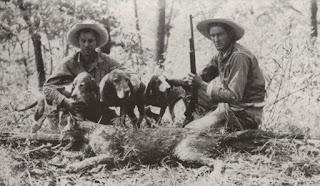A mystery from Aztec times
The royal ounce, the legendary Aztec feline.
During the conquest, the cultural exchange between American cultures and cultures of the old world was enormous, as can be seen in Spanish chronicles and the stories of those who embarked on the journey of conquest.
Among these chronicles, those made by writers who accompanied powerful generals and historical figures, such as Francisco Pizarro or Hernán Cortés, stand out, where you can show us the rich fauna and flora of pre-Columbian America that existed in those times, one of the most striking are those of the chronicler Bernard Díaz del Castillo, who accompanied Hernán Cortés during his conquest of the Aztec empire and was able to witness what for Europeans was something completely unusual: Montezuma's menagerie, which was a large set of areas idealized to contain animals but we will not analyze that today, that will be a topic for another post, what concerns us is the following.
Among the collections of wild animals, the most striking were the large predators, with Montezuma exhibiting wolves, foxes, and ocelots, osos, Pumas and jaguars, all of this for ritual or exhibition purposes, but there was a third feline in addition to the puma and the jaguar which has not been verified until today, this being the mythical ounce and today we will analyze it.
The legend of the ounce
In all the collections of wild animals, Bernard Díaz del Castillo mentioned a second variety of puma, What seemed like a combination between a puma and a wolf, what is most striking is that the ancients already described the similar animal, the cuitla miztli, a feline similar to the puma but with longer limbs, a sunken chest and abdomen, and a thinner anatomy similar to that of the cheetah, having ears longer than those of any other American feline and similar to those of wolves, also according to the natives, this one is much more wild and dangerous than any other feline.
[The most accurate to the description]
Thus, the colonizers baptized this animal as ounce and throughout the colonial era these creatures were talked about many times and were described as dangerous, being described as powerful predators since they hunted horses, calves, pigs and even people, These sightings did not stop after the independence of Mexico but the change continued into our time.
Cases of Modernity.
A small list of completely true encounters and houses with ounces.
In 1926, an American banker during a trip home killed a supposed ounce in the state of Sonora, of which he only took a skull that he wanted as a trophy, and then send it to a museum, to find out what animal it was, yes, but nevertheless the skull disappeared and was never heard from again, here is a photo:
In 1950, the second case was reported when an onza was killed in the mountains of Sinaloa and whose body was sent to a University of Texas where it later disappeared.
The most famous case occurred in 1986, when a landowner was marrying deer on his property in Sinaloa and saw a happy stranger who was preparing to attack him, he quickly managed to shoot him killing him, the rancher who knew the Pumas well knew that this was not one, identified the creature as a female weighing 27 kg and 1.13 long, of which 73 corresponded to the tail, the corpse was also analyzed, and here is the famous photo:
Inconclusive results.
But although they have been analyzed and all the samples have been taken, this case remains undeciphered. On the one hand, it was discovered that it did not have the morphology of either a puma or a jaguar and also Tissues were taken for DNA samples, biochemical analysis, protein tests and Mitochondrial DNA no results were favorable, some studies said that it is nothing more than a puma, but that its mutation is something completely different but in the end perhaps a more favorable explanation is the following, I clarify in this blog we do not support any cryptozoological theory:
When analyzing the DNA samples and the corresponding tests, they revealed that there was no presence of diseases or wear and tear caused by malformations, in addition to the fact that there were no significant mutations in the DNA, so theoretically this would be a normal puma, but what is the reason for its appearance?
Well, let's remember that there is the phenomenon of genetic atavism, where certain ancient genes are reactivated again, giving rise to the appearance of ancient characters of genetic ancestors of certain species, so perhaps this type of mutation in this puma is something reactive.
Let's remember that this relatively common phenomenon, so my theory is that it is a sign of the puma's past as a species, showing us a morphology that may have helped the species survive in ancient North America when the grasslands ruled and adapting to running was the rule, let's also remember that ounce has been a term widely used to refer to other felines such as the ocelot, the margay and the jaguarundi, but even so this mystery will always be fascinating







Comments
Post a Comment